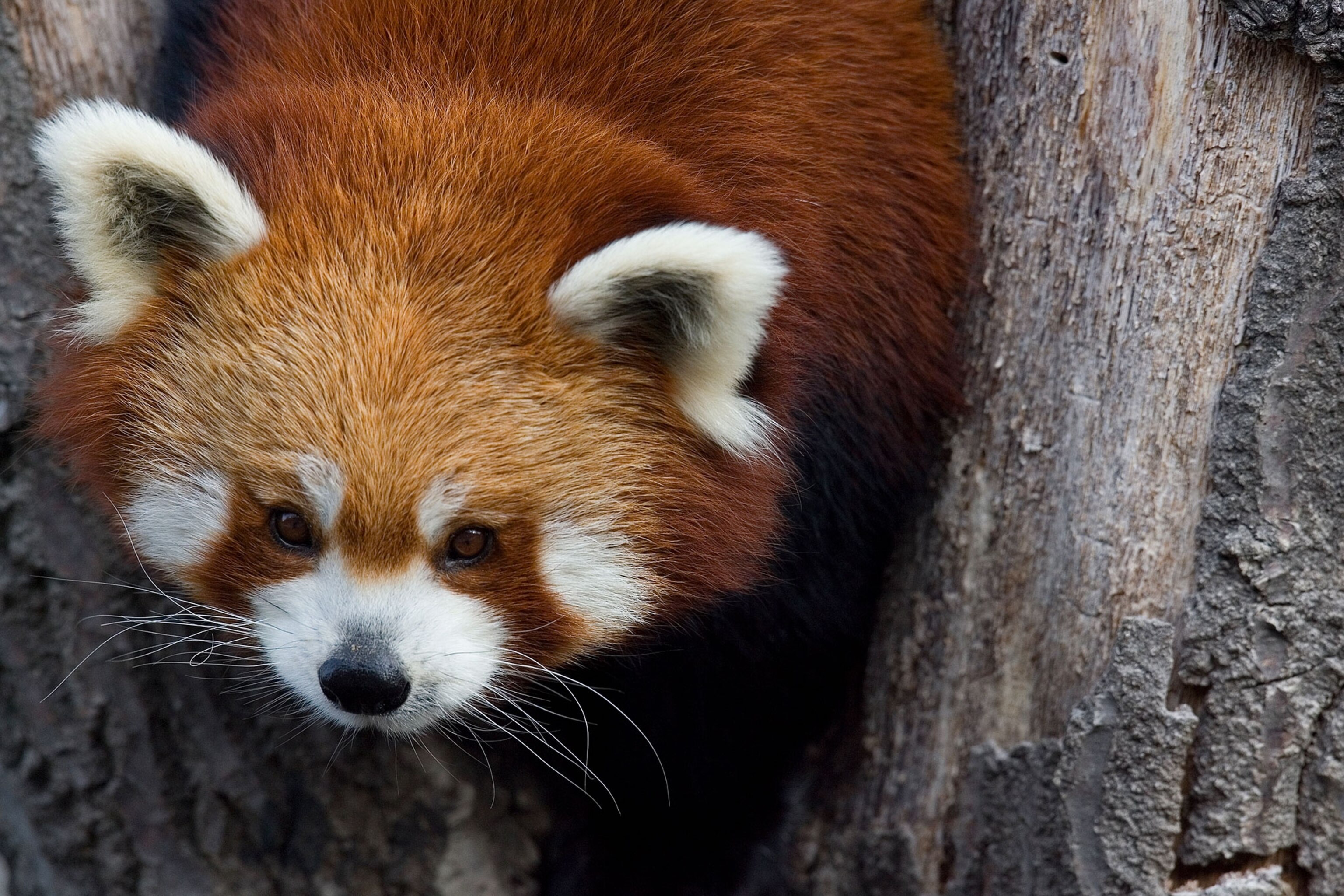
When Matchmaking Is for a Good Cause: Staving Off Extinction
Red pandas are endangered in the wild. But in zoos’ captive-breeding programs, they’re protected, procreating—and replenishing the species.
Sundar is his name; Khusi is hers. Matchmakers in New Zealand introduced them—in the red panda habitat of the Wellington Zoo. Objective: reproduction.
Global networks of captive-breeding programs share and pair animals, hoping to replenish at-risk species and foster genetic diversity. When Sundar and Khusi came from other zoos to Wellington in 2015, they “got on very well together,” says Maxine Jenkins, the zoo’s carnivore team leader. Even so, starting a red panda family can take time because females are in heat only once a year—for just 24 hours.
On a July day in 2017, zookeepers noticed courting behaviors: loud vocalizations, Sundar forcing Khusi from a tree to the ground, trailing her for hours, and then … consummation(s). A few months later, more telltale signs: Khusi looked a little heavier and was gathering sticks and leaves for a nest.
On December 17 Khusi gave birth to a cub. His name is Ngima, a Nepali word meaning “sun in the sky.” Someday, Jenkins says, Ngima may “be part of the breeding program too.”
Red Pandas
Habitat/range: Ailurus fulgens—known by the names red panda, lesser panda, and fire fox—lives in parts of China, Bhutan, India, Myanmar, and Nepal. Its preferred habitat: gently sloping foothills, temperate forests, and an understory of bamboo (its chief food source).
Conservation status: The International Union for Conservation of Nature assesses the red panda as endangered. Estimates of its numbers in the wild range from 2,500 to 10,000. Its habitat has been degraded and fragmented by human activity; it is hunted for the pet trade and is vulnerable to disease spread by herders’ animals.
Other facts: In Bhutan some locals believe red pandas are reincarnations of Buddhist monks, and seeing one is a good omen.








Related Topics
You May Also Like
Go Further
Animals
- Do bats take flight during a solar eclipse? Here’s what we learned.Do bats take flight during a solar eclipse? Here’s what we learned.
- New blue-and-yellow gecko found, named after Van GoghNew blue-and-yellow gecko found, named after Van Gogh
- Scientists race to save Florida's spinning, dying fishScientists race to save Florida's spinning, dying fish
- These 'trash fish' are among Earth's most primitive animalsThese 'trash fish' are among Earth's most primitive animals
Environment
- Will we ever solve the mystery of the Mima mounds?Will we ever solve the mystery of the Mima mounds?
- Are synthetic diamonds really better for the planet?Are synthetic diamonds really better for the planet?
- This year's cherry blossom peak bloom was a warning signThis year's cherry blossom peak bloom was a warning sign
- The U.S. just announced an asbestos ban. What took so long?The U.S. just announced an asbestos ban. What took so long?
- The most dangerous job? Inside the world of underwater weldersThe most dangerous job? Inside the world of underwater welders
History & Culture
- How a 3,000-year-old tomb upended what we know about ancient PeruHow a 3,000-year-old tomb upended what we know about ancient Peru
- Done the Camino? Try tackling Japan’s 88-temple Shikoku TrailDone the Camino? Try tackling Japan’s 88-temple Shikoku Trail
- The origins of this naked chalk drawing are still a mysteryThe origins of this naked chalk drawing are still a mystery
- What these hidden mosaics revealed about ancient RomeWhat these hidden mosaics revealed about ancient Rome
Science
- Some people don’t experience stress. Are they happier?Some people don’t experience stress. Are they happier?
- ‘Urgency culture’ might lead to burnout. How can you combat it?‘Urgency culture’ might lead to burnout. How can you combat it?
- Inside extreme psychological responses to total eclipseInside extreme psychological responses to total eclipse
- Volcanoes blow smoke rings. Here's how they do it.Volcanoes blow smoke rings. Here's how they do it.
- Antarctica's treasure trove of meteorites is disappearingAntarctica's treasure trove of meteorites is disappearing
Travel
- See these 6 architectural wonders before they disappearSee these 6 architectural wonders before they disappear
- Exploring São Paulo, where Brazilian creative subcultures thriveExploring São Paulo, where Brazilian creative subcultures thrive
- Done the Camino? Try tackling Japan’s 88-temple Shikoku TrailDone the Camino? Try tackling Japan’s 88-temple Shikoku Trail
- How to spend a day following the rhythms of São Paulo, BrazilHow to spend a day following the rhythms of São Paulo, Brazil
- English wine is on the rise. Here is where to experience itEnglish wine is on the rise. Here is where to experience it



